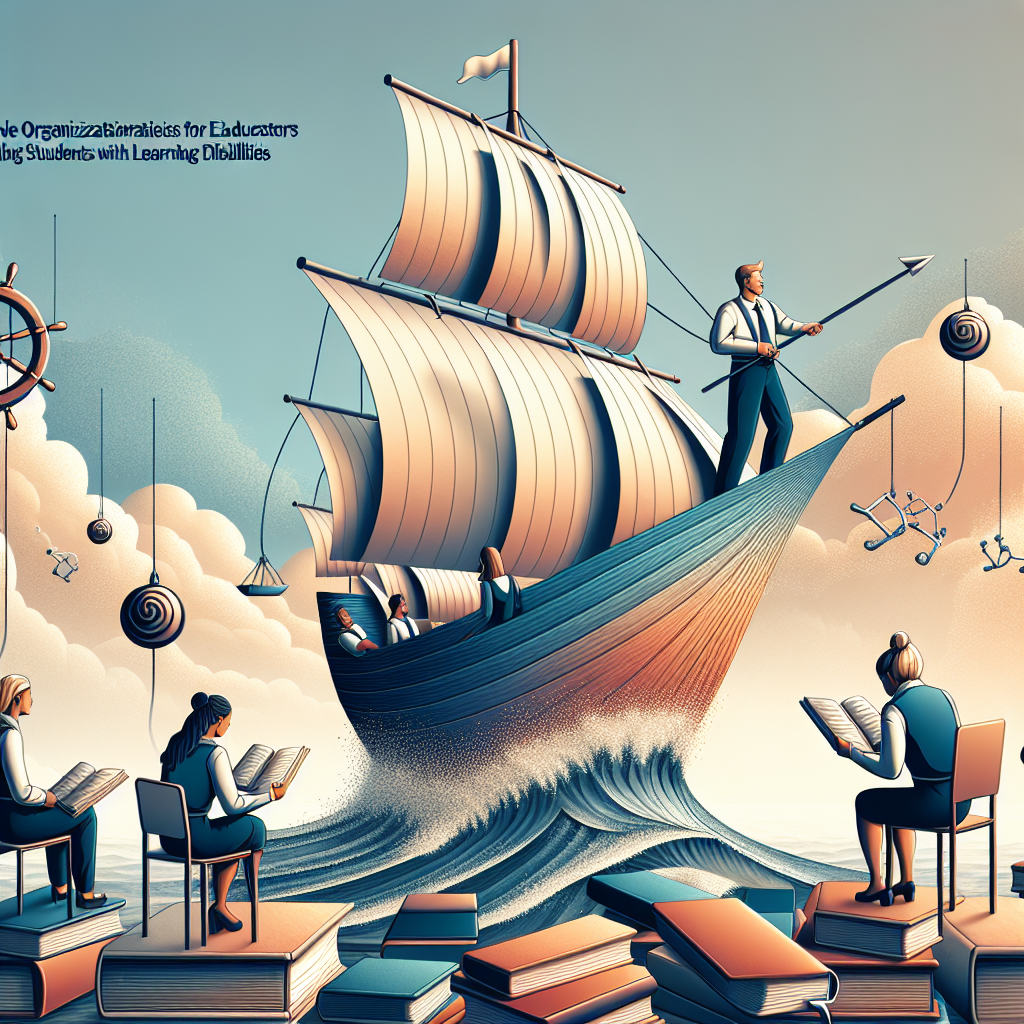Charting the Course: Essential Organizational Strategies for Educators Supporting Students with Learning Disabilities
Introduction
Navigating the complex landscape of education can be particularly challenging when guiding students with learning disabilities. For educators, mastering effective strategies is crucial to foster an inclusive atmosphere that champions every learner’s potential. "Charting the Course: Essential Organizational Strategies for Educators Supporting Students with Learning Disabilities" embodies the commitment required to create impactful educational experiences. This article will delve deep into the organizational approaches that can transform the classroom into a nurturing and effective learning environment, ensuring that no student is left behind.
Understanding Learning Disabilities
Before exploring specific strategies, it’s vital to understand what learning disabilities (LD) are. Learning disabilities encompass a range of neurological disorders that affect one’s ability to read, write, speak, or compute, leading to challenges in processing information. Educators can optimize their teaching methods by recognizing these disabilities’ diverse manifestations, ultimately providing tailored support that individuals require.
Common Types of Learning Disabilities
- Dyslexia: Affects reading and language processing.
- Dysgraphia: Affects handwriting and fine motor skills.
- Dyscalculia: Affects mathematical understanding and problem-solving.
- Nonverbal Learning Disabilities: Impacts visual-spatial, organizational, and social skills.
Understanding these distinctions will enable educators to "Chart the Course" more effectively, implementing strategies that align with each student’s unique needs.
Essential Organizational Strategies
1. Creating a Structured Learning Environment
An organized physical space helps students feel secure and focused. Here are some key elements:
Case Study: Classroom Layout Redesign
At Lincoln Elementary, a restructured classroom layout involved creating designated areas for different activities: reading, hands-on work, and quiet time. Teachers reported increased engagement and reduced distractions, exemplifying how a well-organized space supports diverse learning needs.
Table 1: Classroom Zones
| Zone | Purpose | Resources Needed |
|---|---|---|
| Reading Area | Quiet reading sessions | Books, cushions |
| Activity Space | Hands-on projects | Art supplies, manipulatives |
| Relaxation Zone | Calm down and regrouping | Soft seating, fidget tools |
2. Implementing Visual Supports
Visual aids can immensely benefit students with learning disabilities, helping them process information more effectively.
Techniques for Visual Supports:
- Graphic Organizers: These can assist students in structuring their thoughts and assignments, making complex subjects more manageable.
- Charts and Diagrams: By integrating these into lessons, educators can present information visually, aiding comprehension.
3. Leveraging Technology
In today’s digital age, technology offers numerous tools designed to support learning.
Case Study: Use of Text-to-Speech Software
In a high school setting, the introduction of text-to-speech software for students with dyslexia led to significant improvements in reading comprehension and essay writing. Tools like Read&Write and Kurzweil 3000 can be instrumental in facilitating access to learning materials.
4. Differentiating Instruction
Differentiating instruction is fundamental for meeting diverse learner needs. Educators should personalize lessons to accommodate varying abilities and preferences while maintaining the same learning goals.
Example Strategy: Choice Boards
Choice boards allow students to select tasks from a range of options, providing opportunities for autonomy within structured frameworks.
5. Building Collaborative Support Systems
Engaging with parents, special educators, and other professionals fosters a supportive network essential for student success.
Establishing Regular Communication
Regular check-ins between teachers and parents keep everyone informed about student progress and challenges, which is crucial for implementing "Charting the Course."
6. Setting Clear Goals
Establishing specific, measurable, attainable, relevant, and time-bound (SMART) goals can provide structure and motivation for students with learning disabilities.
7. Fostering Social-Emotional Learning
Supporting social-emotional development is vital, as students with learning disabilities may struggle with self-esteem or regulation.
Integrative Approach: Social Stories
Incorporating social stories can help students understand and navigate social situations, promoting confidence and better interaction with peers.
Conclusion
Charting the course for educators involves implementing essential organizational strategies that empower students with learning disabilities. By cultivating structured environments, utilizing technology, differentiating instruction, and creating collaboration, educators can craft a path for success.
Remember, every student has unique needs, and our role as educators is to honor and support these differences. Together, we can ensure that every learner not only navigates their educational journey but thrives in it.
FAQs
1. What are learning disabilities?
Learning disabilities are neurological disorders that affect how people process and understand information, impacting skills like reading, writing, and math.
2. How can I help students with dyslexia?
Implement visual supports, such as graphic organizers, and utilize technology like text-to-speech software to assist students with dyslexia.
3. What is differentiated instruction?
Differentiated instruction involves tailoring teaching methods and resources to meet diverse learner needs while striving to achieve the same learning objectives.
4. How can parents assist in supporting their child with a learning disability?
Regular communication with educators, reinforcing skills at home, and fostering a positive home environment play crucial roles in supporting a child with a learning disability.
5. Why is social-emotional learning important for students with learning disabilities?
Students with learning disabilities may experience challenges with self-esteem and peer relationships. Promoting social-emotional learning helps build confidence and improves interactions, enhancing overall classroom experience.
By adopting these strategies, educators can more effectively "Chart the Course" for success, providing students with learning disabilities the foundation they need to flourish academically and socially.

